The second edition of Indigenous Fashion Week Toronto (IFWTO) was originally slated for the end of May. But like many of spring’s cultural events, most of the Indigenous art, craft and textiles showcase has been postponed due to the coronavirus pandemic. One element is going ahead as planned, though. A collection of clothing and accessories created by some of IFWTO’s artists and designers in collaboration with fashion retailer Simons is now in select stores and online.
The IFWTO x Edito project came about last spring after IFWTO artist director Sage Paul and Simons buyer Océane Stanislas met on an industry panel. “We wanted again to show the diversity of nations across Canada and diversity of practices from beadwork to appliqué,” Paul says. “It crosses the line to these one-of-a-kind pieces that are very sacred to an individual into more mainstream [fashion].”
Much like the IFWTO lineup, the Simons collection features contributors who are sustaining Indigenous culture. “We want to consider representations in terms of nations, gender, age groups,” Paul says. “Avant-garde and costumey to streetwear and formal-wear, more commercial types of fashion … to show the breadth of Indigenous fashion.” Paul worked with eight different brands and the nine designers behind them – including Tania Larsson, Evan Ducharme and Jordan Bennett, who are profiled here – to make sure their products are sellable without compromising Indigenous identity or the integrity that goes into creation.
For the base garments, Stanislas, who oversees Simons’s more accessible Edito range, worked with the store’s design team on style and fit. Trousers are a more fashion-forward barrel shape, and the breezy top and shift dress capture the ease of summer. Even the choice of fabric mattered. The organic cotton-linen blend not only acts as a blank canvas but reflects another pillar of the Indigenous ethos: staying connected to the land and its resources by honouring nature with environmentally conscious practices. “Sustainability of fashion has to be at the forefront,” Stanislas says.
With the exception of the printed graphics by Bennett and Caroline Monnet, each base garment has been directly customized by the individual artists, which limits quantities and amplifies the uniqueness of each piece. “It’s such a wide array of creativity – no one is doing something remotely similar,” Stanislas says. Everything from the floral beadwork to the embroidery motifs explore deep-rooted design codes. It’s fashion as cultural activism.
Tania Larsson
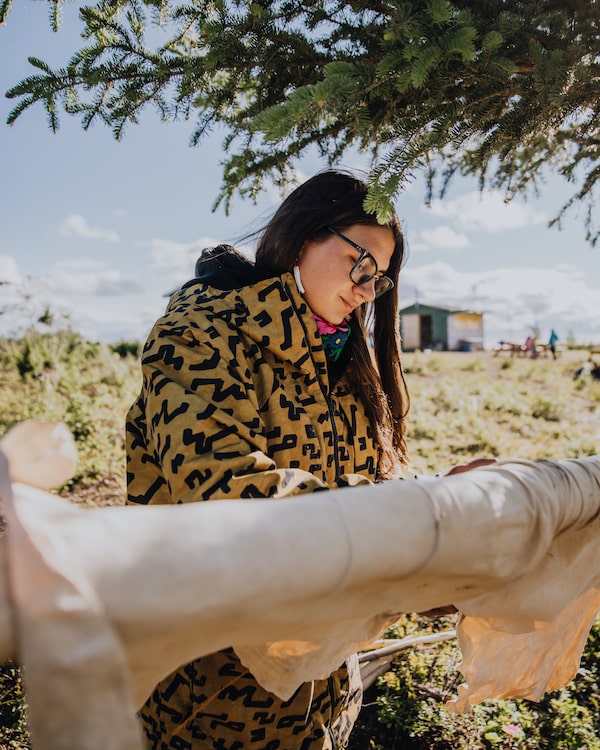
Jamie Stevenson/Courtesy of manufacturer
Through her line Gwich’in Fine Jewellery, artist Tania Larsson fashions northern Indigenous adornments as an inherent part of identity. Of Gwich’in and Swedish descent, Larrson was born and raised in France and came to Canada in her teens. Now based in Yellowknife, she’s a founding member of the Indigenous innovation and cultural revitalization collective Dene Nahjo.
Larsson’s studio practice is based on Gwich’in culture and begins with materials from the Arctic land, including the sustainably harvested muskox horn she carefully carves, sands and polishes by hand. Fringe earrings feature hides she has tanned and treated using traditional methods and tools she forged herself. Other designs are interpretations of her grandmother’s beadwork patterns and feature antique European beads in unexpected colour combinations.
The fusion of traditional skills and materials with Larsson’s contemporary sensibility also creates interesting textural contrast on stud earrings made of velvety tanned moose hide, with intricate beadwork and tiny domes of hand-dyed tufted caribou hair. Larsson releases her capsule jewellery collections via periodic drops on her website, and they usually sell out instantly.
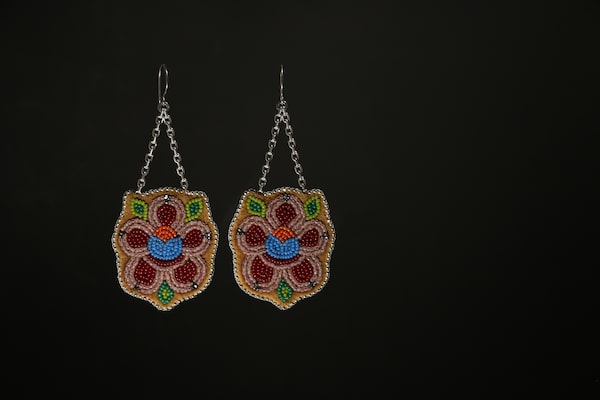
Floral earrings in antique European beadwork by Tania Larsson.Courtesy of manufacturer
In addition to earrings, Larsson’s clothing pieces for Simons underline how even the smallest touch of adornment can be imbued with meaning. She customizes the pants and tops with red ochre, an ancient pigment made from hematite (aka iron oxide). The pigment traces the seams along legs and shoulders to outline the body. The almost minimalist touch is both a poetic gesture and a clever translation of the decorative and ceremonial uses of ochre as a sign of protection and blessing into a fashion context, as though wearing a garment like a talisman.
Evan Ducharme
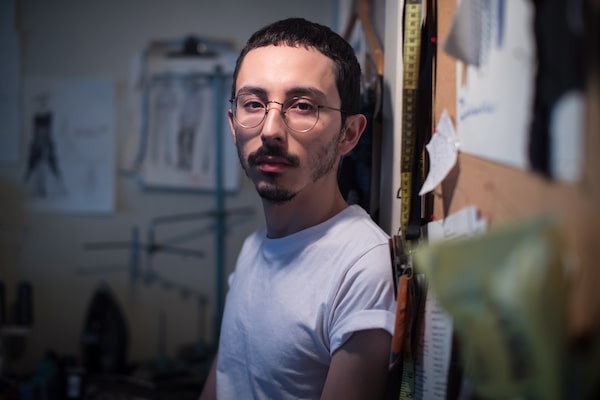
DARRYL DYCK/Courtesy of manufacturer
Evan Ducharme is a Métis artist from St. Ambroise, Man., with ancestral ties to the Cree, Ojibwe and Saulteaux peoples. The Vancouver-based designer presented at the inaugural IFWTO in 2018, showing a breakout collection called Atavism that challenges colonial constructions and labels of identity and sexuality through a mix of utilitarian workwear and complex craftsmanship.

The Atavism Census Bomber jacket.Courtesy of manufacturer
As the name suggests, it’s art with cultural significance that honours ancestors. Bomber jackets and clutch bags, for example, are emblazoned with a census print Ducharme developed based on research about his community. The reproduction of slanting cursive in a ledger from 1916 Canadian census records shows how his great-grandfather’s racial identity was redacted from “French” to “Indian,” a misidentification typical of the era that speaks to the postcontact Indigenous nation’s fight for rights recognition.
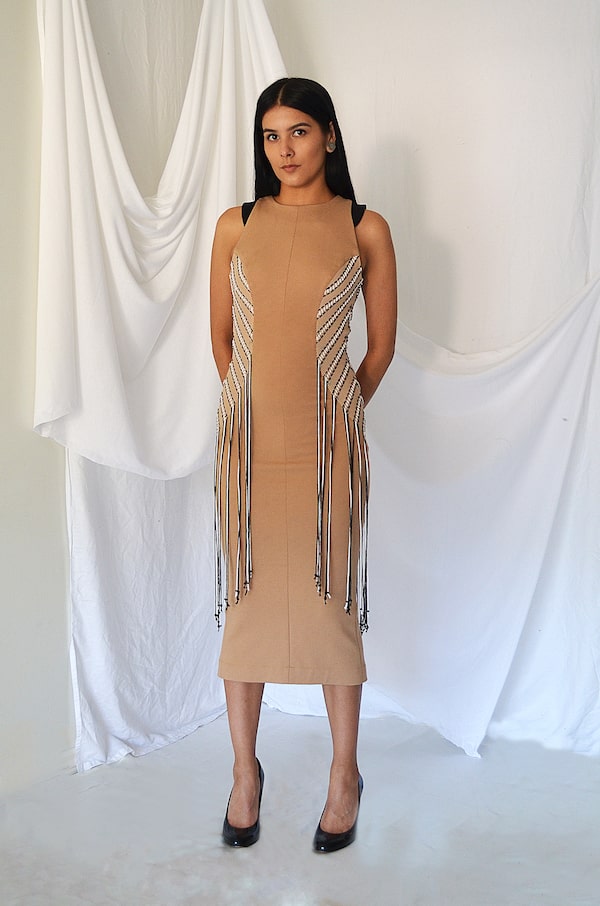
Atavism Edna dress.Courtesy of manufacturer
Other garments feature a modern rendering of the finger-weaving technique typical of the distinctive lightning-bolt sash proudly adopted and worn by the Métis, except strands are handwoven into contemporary athletic mesh tops and hang as tasselled fringe with individual glass beads.
Ducharme’s pieces in the Simons collaboration translate the craftsmanship featured in Atavism with the ease of linen separates. On the runway, the sheer tan mesh is an overall body-conscious base for intricate embroidery; in the Simons line, the handwork serves to highlight cuffs and sleeves. On the more tailored V-neck dress, the embroidery snakes up the body like corset lacings. As a dramatic flourish on an otherwise casual top, it sprouts as an asymmetrical cascade of fringe from the neckline.
Jordan Bennett
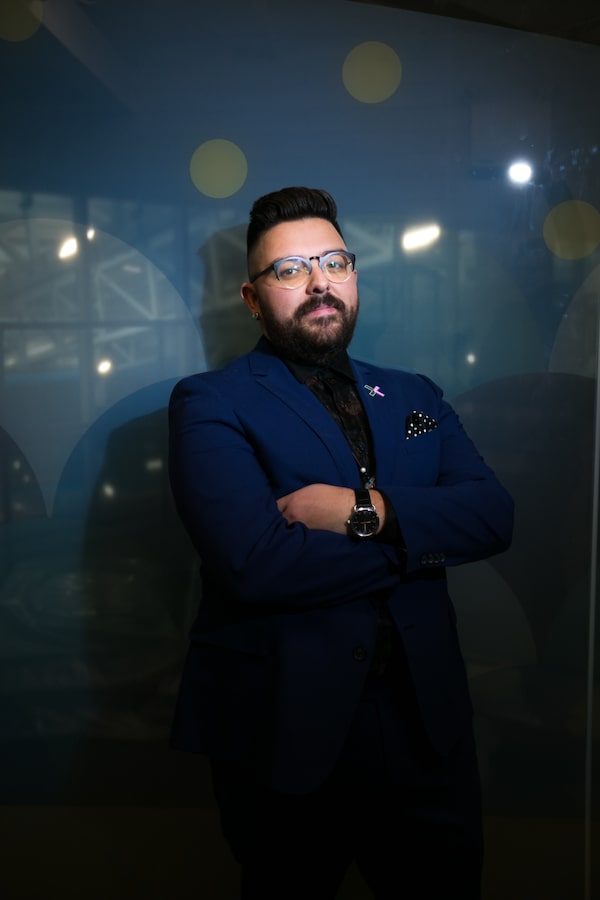
Chantal Routhier/Courtesy of manufacturer
Multidisciplinary artist Jordan Bennett has been exhibited in national and international galleries and museums, including the Art Gallery of Nova Scotia, and has several times been long- and shortlisted for the Sobey Art Award. A Mi’kmaq artist from Stephenville Crossing, Ktaqamkuk (Newfoundland), Bennett lives and works in Terence Bay, N.S., and his artistic practice draws on Mi’kmaq and Beothuk visual culture.
Working in a variety of mediums at the intersection of ancestral, contemporary and pop culture traditions, Bennett explores cultural iconography and draws on historical sources. He returns, for example, to the eight-pointed star that has been an important visual signifier of the Mi’kmaq nation for centuries. Elsewhere, he explores and deconstructs bold design elements from the Beothuk and Mi’kmaq fine crafts, including basketry and quillwork.

Bennett's Pendleton blanket.Courtesy of manufacturer
Ketu’elmita’jik, his immersive wall painting installation at the Art Gallery of Nova Scotia, incorporated ornate antique Mi’kmaq quillwork artefacts through extensions of pattern and paint that put them in dialogue with the present; another large-scale public art mural in a Dartmouth sports recreation centre is an expanse of juxtaposed colourfields and remixed emblematic geometry.
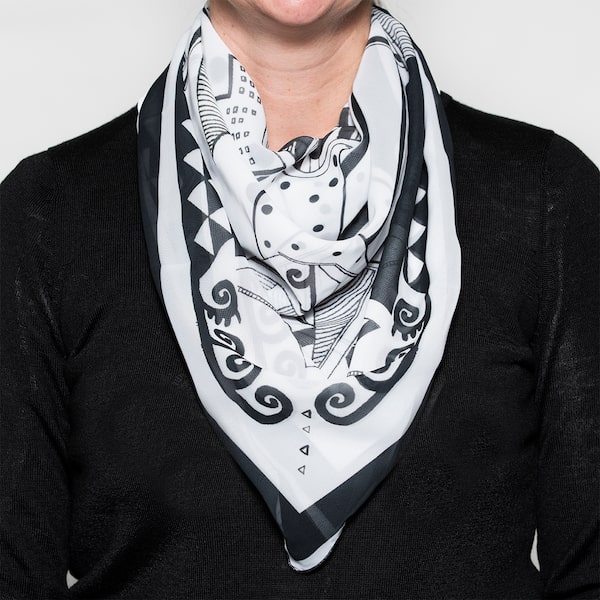
Bennett's 'Seasons Through Black and White' scarf.Courtesy of manufacturer
Other projects have included public art installations, such as the swirls of fabric and aluminum panels suspended in the soaring atrium of Toronto’s Brookfield Place. Bennett has also worked with eBay Canada and the NFB/imagineNative film and media arts festival, and even created a blanket collection with venerable Pendleton Woolen Mills.
What a lot of his work has in common are bold graphics in an exuberant and saturated colour palette, which help his contribution to the IFWTO x Edito line stand out.
Sign up for the weekly Style newsletter, your guide to fashion, beauty and design, and follow us on Instagram @globestyle.